Anyone who has tasted a fresh, ripe banana knows how delicious this fruit can be. What many people don’t know, however, is that you can grow your banana trees right at home.
This blog post will teach you everything you need to know about growing banana plants and caring for them properly. So, if you are interested in adding a banana tree to your garden, keep reading!
What are Banana trees?
Banana trees are one of the oldest cultivated plants in the world. The scientific name for the banana tree is Musa sapientum, which means “fruit of the wise men.” They are fast-growing and can grow up to 20 feet tall. They have a false trunk made up of 6-7 feet long and 2 feet wide leaves. The leaves are attached to the stalk by a thin stem.
The flowers of the banana tree are also called inflorescence, and they grow in clusters at the end of the false trunk. Each cluster can have 50-150 flowers. Once the flowers bloom, the fruit starts to form. It takes about 5-6 months for bananas to mature. Bananas come in different sizes, shapes, and colors. The most common type of banana is the Cavendish banana, which is the type that you find in supermarkets.
The fruit of the banana tree is eaten fresh or cooked. In addition to potassium, bananas are a good source of vitamin C, dietary fiber, and vitamin B6. They can also make banana bread, muffins, and other baked goods.
Banana trees are native to Southeast Asia and India but are now grown in many tropical countries worldwide. In the United States, bananas are grown in Hawaii and Florida.
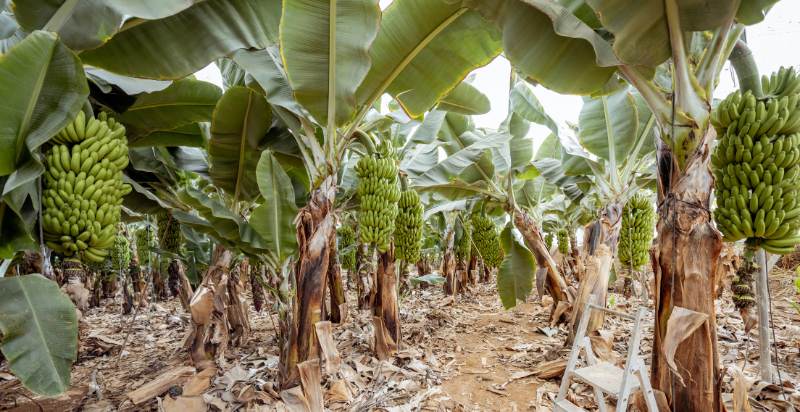
Types of Banana Trees:
There are two main banana trees: Musa Acuminata and Musa Baalbisiana.
Musa Acuminata is the most common type of banana tree. It includes the Cavendish bananas, the type you find in supermarkets. Musa Baalbisiana is a hybrid of two other types of bananas, including the Plantain bananas.
Some of the more well-liked varieties of banana trees include the following:
- Cavendish Bananas: The most common type of banana, they are loved for their sweet taste and creamy texture. They are usually about 6-8 inches long and have a yellow peel with brown spots.
- Plantain Bananas: These bananas are larger and starchier than Cavendish bananas. They have thick skin that is green or yellow when ripe. Plantain bananas are usually cooked before they are eaten.
- Red Bananas: These bananas are smaller and sweeter than Cavendish bananas. They have a reddish-purple peel and are often used in baking.
- Lady Finger Bananas: Also called Finger bananas, these bananas are small and sweet with a delicate flavor. They have a yellow peel with brown spots.
- Baby Bananas: These miniature bananas are about 2-3 inches long. They have a sweet taste and a creamy texture.
Uses for Banana Trees:
Banana trees can be used for a variety of purposes, including:
- Fruit: Bananas are the most popular use for banana trees. They can be baked with, eaten raw, or cooked.
- Animal Feed: Banana trees can also be used as animal feed. The leaves and stems can feed cattle, goats, and sheep. The fruits can also be fed to chickens and pigs.
- Fiber: Banana trees can be used to make rope and fabric. The fibers from the tree can be used to make various products, including paper and cloth.
As you can see, They have several uses. If you’re considering growing banana trees, learn about the various varieties and pick the best one.
Health Benefits of Banana Trees:
Banana trees are a good source of potassium, vitamin C, dietary fiber, and vitamin B6. They can also help you regulate blood sugar levels and promote bowel regularity.
Bananas are also antioxidants, which can aid in preventing cell damage.
When consumed in moderation, bananas can be part of a healthy diet. However, if you eat too many bananas, you may consume too much sugar and calories. If you are watching your weight, eating bananas in moderation or as part of a healthy diet is best.
Nutrition of Banana:
A medium banana contains about 105 calories and 27 grams of carbohydrates. It also has 3 grams of dietary fiber, 1 gram of protein, and 0 grams of fat.
How To Grow Banana Trees?
Banana trees need warm weather to grow. They do not tolerate frost or freezing temperatures. In general, banana trees prefer tropical and subtropical climates.
You must start with a young plant or tree to grow banana trees. They can be purchased from a nursery or online. Once you have your plant or tree, you need to plant it in well-drained soil high in organic matter.
Banana trees need full sun to grow and produce fruit. They also need a lot of water. It should be watered regularly, especially during the warmer months.
Once your it is established, it will start to produce flowers and fruits. Bananas are usually ready to harvest 4-6 months after they flower.
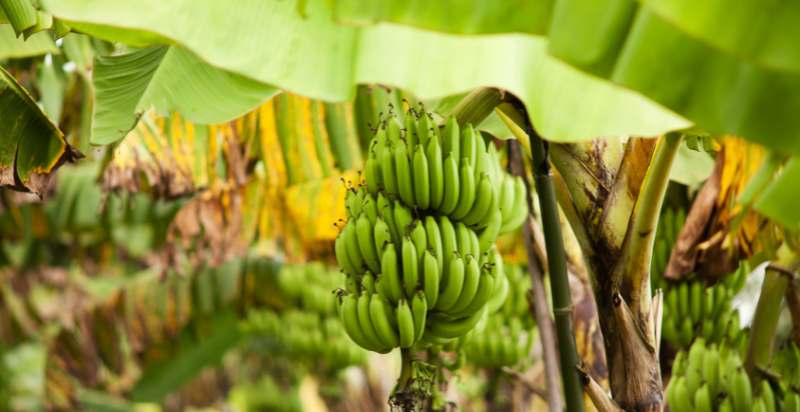
Prevention From Pests And Diseases:
Banana trees are susceptible to several pests and diseases. These include aphids, mealybugs, nematodes, and fungi.
To protect and prevent pests and diseases from affecting your banana tree, you must water it regularly and keep the area around it clean. You should also remove any dead leaves or fruits from the tree.
If you notice any signs of pests or diseases on your tree, you must treat them immediately. Several pesticides and fungicides are designed specifically for banana trees.
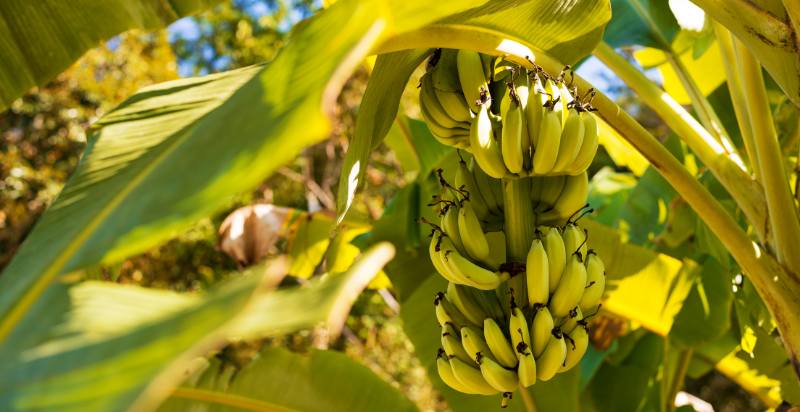
Harvesting:
Bananas are usually ready to harvest 4-6 months after they flower. To harvest bananas, cut them from the stem with a sharp knife. Once cut, you can place them in a cool, dark place to ripen for a few days.
After they have ripened, you can eat them fresh or use them in recipes.
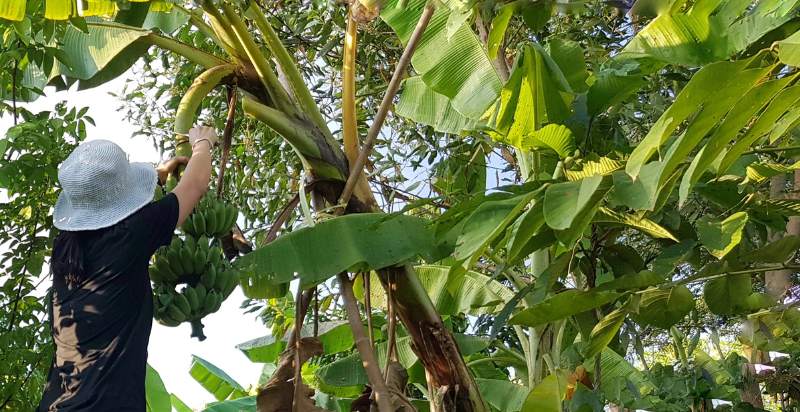
How To Care For Banana Trees?
Banana trees need full sun and a lot of water to grow. They also need well-drained soil that is high in organic matter. It should be fertilized regularly with a balanced fertilizer.
To protect your banana tree from cold weather, you can wrap it in burlap or plastic. You should also bring the tree indoors if the temperature drops below 50 degrees Fahrenheit.
When harvesting bananas, be careful not to damage the tree. Cut the stem about 2-3 inches above the bunch of bananas. Bananas can be eaten fresh or cooked. They can also make banana bread, muffins, and other baked goods.
How To Store-Grown Bananas?
Bananas are best stored at room temperature. Although they will deteriorate more quickly in the fridge, you can also store them there. Bananas can be frozen to maintain their freshness for a longer period.
When storing bananas in the freezer, peel them first and then place them in a freezer bag. Frozen bananas can be stored for up to 6 months.
Place bananas in a paper bag with an apple or lemon to hasten the ripening process. The fruit will create ethylene gas, which will hasten the ripening process.
Ripe bananas can be used in smoothies, baking, or as a healthy snack. You can also freeze ripe bananas to use in smoothies or baking later.
How To Eat Bananas?
Bananas can be eaten fresh, cooked, or baked. They can also make banana bread, muffins, and other baked goods.
When eating fresh bananas, you can peel and eat them. You can also slice them up and add them to your cereal or oatmeal. Bananas are also a great addition to smoothies.
Bananas can be used in baking, frying, soups, and stews, among other recipes. Additionally, bananas can be used in baking recipes as a natural sweetener.
To freeze bananas, peel them and then place them in a freezer bag. Frozen bananas can be stored for up to 6 months.
When thawing frozen bananas, please place them in the fridge overnight or for a few hours at room temperature. Do not try to microwave frozen bananas.
Ripe bananas can be used in smoothies, baking, or as a healthy snack. You can also freeze ripe bananas to use in smoothies or baking later.
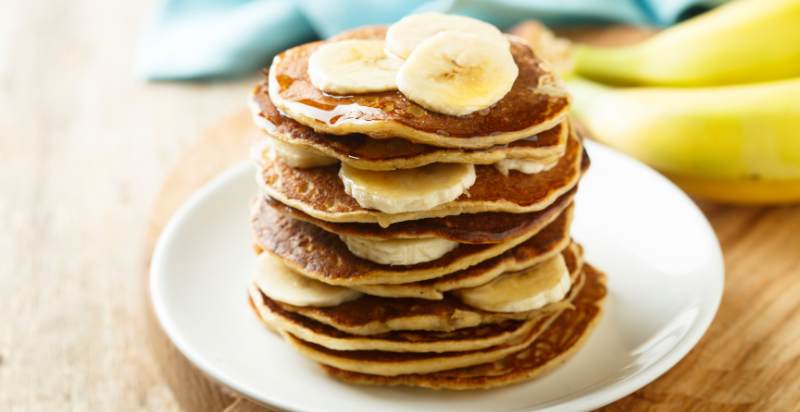
How to make banana bread?
Banana bread is a quick bread made with ripe bananas, flour, sugar, eggs, and butter. Banana bread is often baked in a loaf pan and served sliced.
To make banana bread, start by mixing the dry ingredients:
- Flour, sugar, baking powder, and salt.
- In a separate bowl, mash the ripe bananas.
- The dry ingredients should be added to the wet ingredients, then combined.
Bake the batter at 350 degrees Fahrenheit for about 50 minutes or until a toothpick inserted in the center comes out clean. Pour the batter into a greased loaf pan. Before slicing and serving, let the banana bread cool slightly in the pan.
In an airtight container, banana bread can be kept at room temperature for up to five days. Furthermore, banana bread can be frozen for up to three months. Overnight in the refrigerator or at room temperature, defrost frozen banana bread.
Risks Of Eating Too Many Bananas:
While bananas are a healthy and nutritious food, it is possible to eat too many of them. Overconsumption of bananas can result in weight gain and other health issues.
If you are eating a lot of bananas, eat other fruits and vegetables. A diet that consists only of bananas can lead to nutrient deficiencies.
Eating too many bananas can also cause digestive problems like diarrhea and constipation. If you experience these symptoms, cut back on the number of bananas you eat.
Conclusion:
Bananas are a healthy and nutritious food. However, it is possible to eat too many of them. If you are eating a lot of bananas, eat other fruits and vegetables. A diet that consists only of bananas can lead to nutrient deficiencies. Eating too many bananas can also cause digestive problems like diarrhea and constipation.
If you experience these symptoms, cut back on the number of bananas you eat. If you are worried about eating too many bananas, consult a registered dietitian or your doctor. They can assist you in putting together a balanced and nutritious diet.
- Everything You Wanted to Know About Red Tamarillos - June 2, 2025
- A Guide to Tulips: Everything You Need to Know & More… - June 2, 2025
- Guanabana: Description, Flavor, Benefits, And Uses - May 27, 2025

19 thoughts on “Banana Trees: How to Grow and Care for Your Banana Plant”
Comments are closed.